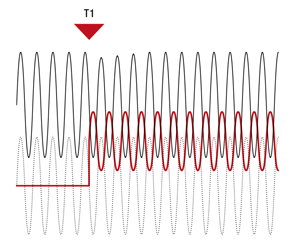
Helmut Lipp, R&D Manager Development Electronics at ebm-papst in Mulfingen
Fault currents can be dangerous for people, machinery and entire systems. For personal safety, Type A residual current circuit breakers with a maximum tripping current of 10 mA or 30 mA are required. Type B with 300 mA is required for fire safety, but such high currents can lead to irreversible harm or even death in humans, so the choice in industrial settings is not always easy.
This is also an issue when electronically commutated (EC) DC motors are used. For EC devices with passive power factor correction (PFC), Type A serves its purpose reliably. However, if for example EC fans are operated in parallel, active PFC is used to avoid harmonic currents in the power grid. To decide which circuit breaker is the right one here, the topology of the commutation electronics needs a closer look since it determines the current waveform in the event of a fault. Depending on the DC link voltage CZWK across the capacitor, a voltage builds up between the positive terminal of the capacitor and the PE potential; this voltage has a waveform that differs with the topology.
With active PFC, the DC link voltage CZWK across the capacitor can be set to values of UZWK > √ 2×Uac,rms. Here the voltage potential is always greater than 0 V. The minimum value is Umin = UZWK -√ 2×Uac,rms. If there is an insulation fault, this is the same condition as if a resistor were inserted between the potential UZWK+ and PE. The fault current behaves analogously to the voltage.
For an inverter with active PFC, the current drops to a minimum value Ifault = √ 2× UZWKmin/Rfault. We have measured the behavior of the circuit topology, taking an insulation fault into account; a fault current Ifault > 30 mA was set. With this fault current, the Type A residual current circuit breaker did not trip.
In the same experiment using a Type B circuit breaker, it disconnected the circuit from the power supply at a time T2 after the fault occurred. In order to provide the necessary safety for people, machinery and systems with EC drives connected to circuits using electronics with active PFC as boost converter, these residual current circuit breakers Type B are the right choice.

EC motor with active PFC. The Type A residual current circuit breaker fails to trigger.

The Type B residual current circuit breaker disconnects the circuit from the power supply at a time T2 after the fault occurred.

Leave a comment